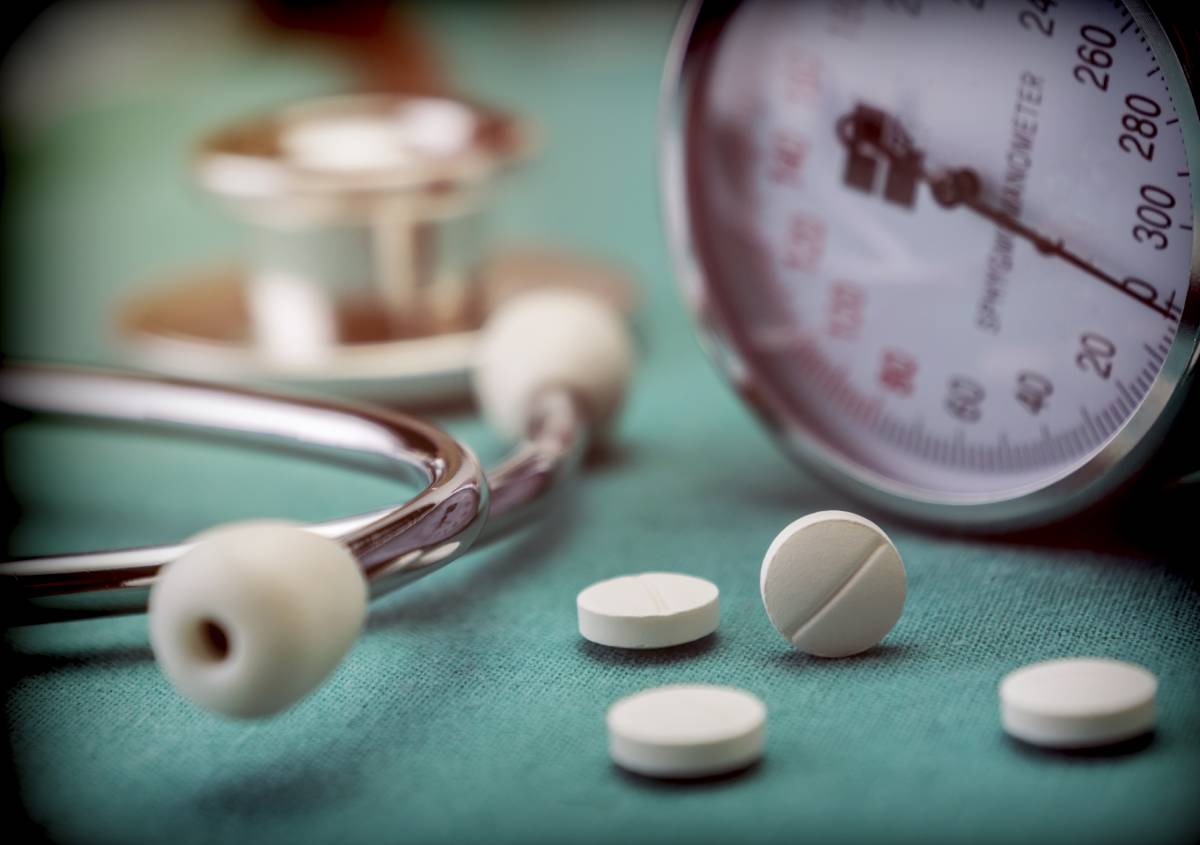Antihypertensive Medication: Mechanisms and Indications

Hypertension is a leading cause of increased cardiovascular disease. Hypertension is categorized by the American College of Cardiology (ACC) and American Heart Association (AHA) according to a number of stages, culminating in hypertensive crises for systolic blood pressure (BP) levels over 180 or diastolic BP levels over 120 1. Long-term hypertension is a major risk factor for stroke, coronary artery disease, heart failure, atrial fibrillation, vision loss, chronic kidney disease, dementia, and death 2. Lowering blood pressure in hypertensive patients is thus critical 3. Treatment involves lifestyle changes and antihypertensive medication.
To treat hypertension, according to the 2019 ACC/AHA Guideline on the Primary Prevention of Cardiovascular Disease, it is best that all patients first undergo lifestyle changes. These include adhering to a healthy heart diet, weight loss when appropriate, increased physical activity, a low sodium diet, and limiting alcohol consumption.
If such conservative management through lifestyle modifications fails, antihypertensive medication can be administered. There are various classes of antihypertensive medications for the treatment of HTN. The most highly recommended medication classes are thiazide-type diuretics, calcium channel blockers, angiotensin-converting enzyme (ACE) inhibitors, and angiotensin II receptor blockers. These medications are usually begun as monotherapy, progressing to a combination thereof as need be.
Thiazides inhibit the reabsorption of sodium in the distal tubule of the kidney by blocking sodium-chloride symporter channels, alongside a minor, less well-understood effect on the proximal tubule 4. Heightened sodium excretion results in volume depletion and decreased cardiac output. These outcomes recover within 6 to 8 weeks through inherent autoregulatory mechanisms while blood pressure remains decreased 1. Thiazides are generally orally administered and contraindicated in patients with hypotension, gout, kidney failure, or hypokalemia, and patients currently taking lithium medication.
Meanwhile, calcium channel blockers inhibit calcium entry into cells by binding to L-type voltage-gated calcium channels in cardiomyocytes 5. In so doing, they reduce muscular arterial contraction and result in vasodilation, thereby decreasing blood pressure. Calcium channel blockers are orally administered.
ACE inhibitors, in contrast, decrease blood pressure by inhibiting angiotensin-converting enzyme. This reduces angiotensin II production, which leads to the inhibition of the degeneration of bradykinin, thereby increasing its levels and effectively leading to vasodilation 6. All ACE inhibitors are orally administered, with the exception of enalapril, which is intravenously administered.
Finally, angiotensin II receptor blockers work by inhibiting the activity of angiotensin-converting enzyme, which catalyzes the conversion of angiotensin I to angiotensin II, forming a key component of the renin-angiotensin system. Given angiotensin II’s vasoconstrictive effects, this results in increased levels of bradykinin as well, the synergistic effect of which is to enhance vasodilation. All angiotensin II receptor blockers are orally administered.
These antihypertensive medications each incur various side effects and are contraindicated in patients with a history of previous hypersensitivity. Considerations when choosing antihypertensives include the patient’s age, race, and other medical conditions. Given that some of these medications can cause severe side effects, patient status should be closely monitored over the course of their administration. In particular, electrolytes and renal function should be continuously assessed, and providers should monitor for potential hypotension and edema. Severe toxicity and dehydration should also be avoided through careful monitoring.
An interdisciplinary team of healthcare workers is recommended to ensure monitoring adherence and prevent adverse reactions to antihypertensive medication. This will help ensure maximal benefits and the best care possible with regard to the patient and their family.
References
1. Antihypertensive Medications – StatPearls – NCBI Bookshelf. Available at: https://www.ncbi.nlm.nih.gov/books/NBK554579/.
2. Lackland, D. T. & Weber, M. A. Global burden of cardiovascular disease and stroke: Hypertension at the core. Canadian Journal of Cardiology (2015). doi:10.1016/j.cjca.2015.01.009
3. Ettehad, D. et al. Blood pressure lowering for prevention of cardiovascular disease and death: A systematic review and meta-analysis. Lancet (2016). doi:10.1016/S0140-6736(15)01225-8
4. Thiazide Diuretics – PubMed. Available at: https://pubmed.ncbi.nlm.nih.gov/30422513/.
5. Calcium Channel Blockers – PubMed. Available at: https://pubmed.ncbi.nlm.nih.gov/29494080/.
6. Angiotensin Converting Enzyme Inhibitors (ACEI) – PubMed. Available at: https://pubmed.ncbi.nlm.nih.gov/28613705/.
